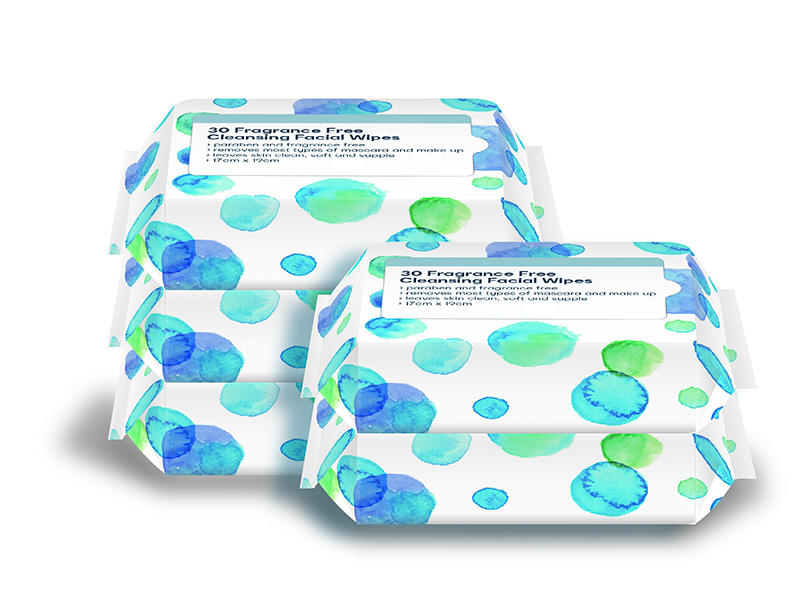1. Basic characteristics of PP/pulp composite spunlace fabric
PP/pulp composite spunlace fabric is a non-woven fabric material made of polypropylene (PP) fiber and pulp fiber through spunlace process. Among them, PP fiber has the characteristics of high strength, good wear resistance and strong hydrophobicity, which gives the material good physical and mechanical properties, making it not easy to break during the cleaning process and able to withstand repeated wiping and rubbing; pulp fiber has the advantages of high water absorption, good softness and strong adsorption, which can quickly absorb liquid stains and gently contact the cleaned surface to avoid scratches. The composite of the two fibers combines the strengths of both and provides an ideal material basis for kitchen cleaning.
The spunlace process uses high-pressure water flow to spray the fiber web to entangle the fibers with each other, thereby forming a non-woven fabric with certain strength and structure. In this process, the characteristics of PP fiber and pulp fiber are fully integrated, and the distribution and arrangement of the fibers are also affected by the process parameters, which in turn affects the performance of the final product.
2. Specific effects of the ratio of PP fiber to pulp fiber on cleaning effect
(I) Water absorption and oil absorption
In kitchen cleaning, water absorption and oil absorption are important indicators to measure the cleaning effect of rags. Pulp fiber has excellent water and oil absorption capacity due to its unique porous structure and hydrophilic properties. When the ratio of pulp fiber in PP/pulp composite spunlace cloth increases, the water absorption and oil absorption of the rag will be significantly improved. For example, when cleaning the surface of a stove with heavy oil stains, a rag with a high pulp fiber ratio can quickly absorb the oil stains and transfer them from the stove surface to the inside of the rag, reducing the oil residue on the stove surface.
However, the hydrophobicity of PP fiber will have a certain inhibitory effect on the water and oil absorption performance of the rag. When the PP fiber ratio is too high, although the strength and wear resistance of the rag will be improved, because PP fiber is not easy to combine with water and oil molecules, the overall water and oil absorption speed of the rag will slow down, and the cleaning efficiency will be reduced. Therefore, when designing PP/pulp composite spunlace cloth, it is necessary to find a suitable fiber ratio to balance the water and oil absorption performance and physical and mechanical properties of the rag.
(II) Decontamination ability
Decontamination ability is the core manifestation of the cleaning effect of kitchen rags. The decontamination ability of PP/pulp composite spunlace cloth is closely related to the fiber ratio. The softness and adsorption of pulp fibers enable them to penetrate into the tiny gaps on the surface of objects, adsorb and remove dirt. At the same time, the tiny fluff structure on the surface of pulp fibers increases the contact area with dirt, further improving the adsorption effect.
The presence of PP fibers enhances the wiping friction of the rag. During the cleaning process, an appropriate proportion of PP fibers can help remove stubborn stains through physical friction. For example, for burnt food residues, a rag containing a certain proportion of PP fibers can generate enough friction during the wiping process to scrape the residue off the surface of the bottom of the pot. However, if the proportion of PP fiber is too high, the rag may be too rough, which may easily cause scratches when cleaning some smooth surfaces (such as stainless steel kitchenware and glass countertops), affecting the appearance and service life of the kitchenware; while if the proportion of pulp fiber is too high, although it is friendly to smooth surfaces, it may be difficult to remove stubborn stains due to insufficient friction.
(III) Softness and surface adaptability
There are various surfaces of different materials in the kitchen, such as ceramics, plastics, wood, etc. The softness and surface adaptability of the rag directly affect the cleaning effect and the protection of the cleaned objects. Pulp fiber itself is soft and delicate. PP/pulp composite spunlace cloth with a high pulp fiber ratio has good softness and can gently contact various sensitive surfaces, such as wooden cabinets, ceramic tableware, etc., without causing damage to their surfaces during the cleaning process.
PP fiber is relatively hard. As the proportion of PP fiber increases, the hardness of the rag will gradually increase. Although a certain hardness helps to enhance the wiping force, a rag that is too hard may bring risks when cleaning soft or fragile surfaces. Therefore, when cleaning kitchen utensils of different materials, it is necessary to choose a rag with a suitable fiber ratio according to the specific situation to ensure that it can not only effectively clean but also protect the surface of the cleaned object.
(IV) Durability and service life
Durability is an important factor in measuring the cost and practicality of kitchen rags. The high strength and wear resistance of PP fiber make the composite spunlace cloth containing a higher proportion of PP fiber have better durability. During frequent use and cleaning, rags with a high PP fiber ratio can maintain a good physical structure and are not prone to problems such as breakage and pilling, thereby extending the service life.
However, if the proportion of PP fiber is excessively increased in pursuit of durability, the water absorption and oil absorption and softness of the rag will be sacrificed, affecting the cleaning effect. Although pulp fiber has good water absorption, its strength is relatively low. Too much pulp fiber will cause the rag to be easily damaged during use. Therefore, a reasonable fiber ratio is crucial to balancing the durability and cleaning performance of the rag, which can extend the service life of the rag and reduce the cost of use while ensuring the cleaning effect.
3. Fiber ratio selection for different kitchen cleaning scenarios
(I) Daily cleaning
For daily cleaning in the kitchen, such as wiping countertops and tableware, the rag usually needs to have good water absorption and softness to gently and effectively remove dust, water stains and light oil stains. In this scenario, you can choose a PP/pulp composite spunlace cloth with a relatively high pulp fiber ratio, such as 60%-70% pulp fiber and 30%-40% PP fiber. Such a ratio can ensure that the rag quickly absorbs water and oil during the cleaning process, and is friendly to the surfaces of various materials without causing damage.
(II) Deep cleaning
When performing deep cleaning in the kitchen, such as removing stubborn oil stains and burnt stains, the rag needs to have stronger decontamination ability and appropriate friction. At this time, the proportion of PP fiber should be appropriately increased, such as 50%-60% PP fiber and 40%-50% pulp fiber. A higher proportion of PP fibers can provide sufficient wiping friction to help remove stubborn stains, while pulp fibers can still maintain a certain degree of water absorption and adsorption, ensuring that dirt can be effectively absorbed and removed during the cleaning process.
(III) Cleaning sensitive surfaces
For cleaning sensitive surfaces in the kitchen, such as high-end stainless steel kitchenware, glassware, wooden furniture, etc., special attention should be paid to the softness of the rag to avoid scratches. In this case, a composite spunlace cloth with a higher proportion of pulp fibers (70% - 80%) and a lower proportion of PP fibers (20% - 30%) should be selected to ensure that the rag can gently contact the surface and protect its integrity while effectively cleaning.
The fiber ratio of PP/pulp composite spunlace cloth has an important impact on the kitchen cleaning effect in terms of water absorption, decontamination ability, softness and durability. In practical applications, the fiber ratio should be reasonably selected according to different kitchen cleaning scenarios and needs to achieve the best cleaning effect and use experience. At the same time, with the continuous development of material science and process technology, it is expected that the fiber ratio and performance of PP/pulp composite spunlace fabrics will be further optimized in the future to provide more efficient and high-quality products for kitchen cleaning.


 中文简体
中文简体 English
English Беларуская
Беларуская 한국어
한국어 Français
Français 日本語
日本語 русский
русский Español
Español












